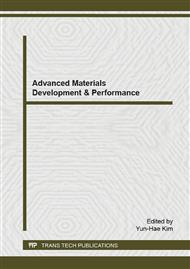p.152
p.158
p.163
p.169
p.173
p.179
p.185
p.191
p.197
Dominant Variables for Hardening of Axle Shaft through High Frequency Induction Heating
Abstract:
Induction heating is being actively studied, and High frequency induction heating (HFIH) is widely used for various industrial applications. The reason for highlighting induction heating is that it has many advantages compared with previously used heating methods. The performance of HFIH is governed by a number of variables, including the applied frequency and power, shape of the coil, and duration of the process. We assumed that two of these variables are dominant. The first variable is the shape of the coil. The second variable is the frequency related to the skin effect. We found the optimal hardening conditions by changing these variables. The HFIH process was simulated using FEM and compared with results from experiments. We believe that the results of this study will be helpful for users of HFIH in the near future.
Info:
Periodical:
Pages:
173-178
Citation:
Online since:
June 2015
Authors:
Price:
Сopyright:
© 2015 Trans Tech Publications Ltd. All Rights Reserved
Share:
Citation:


